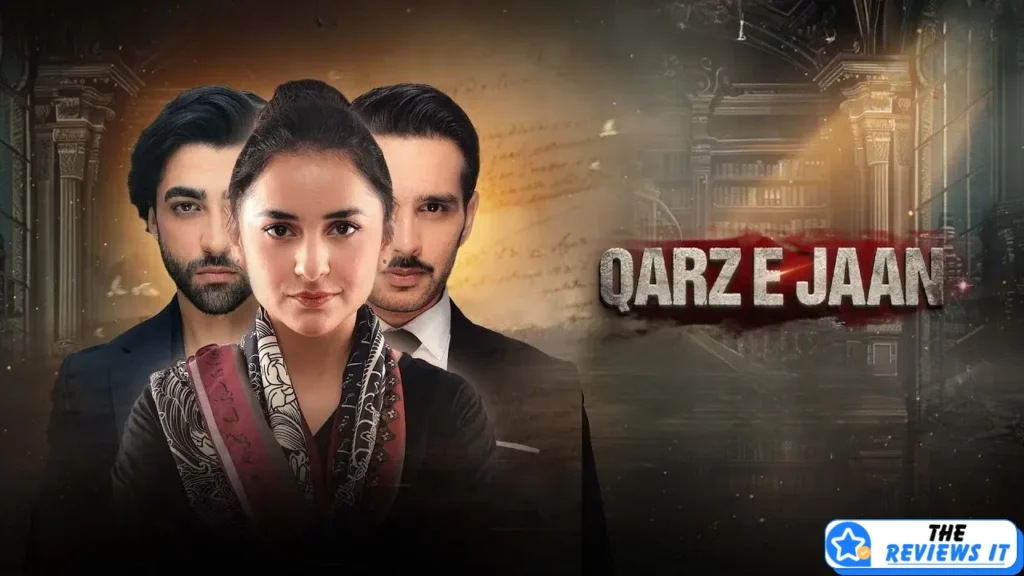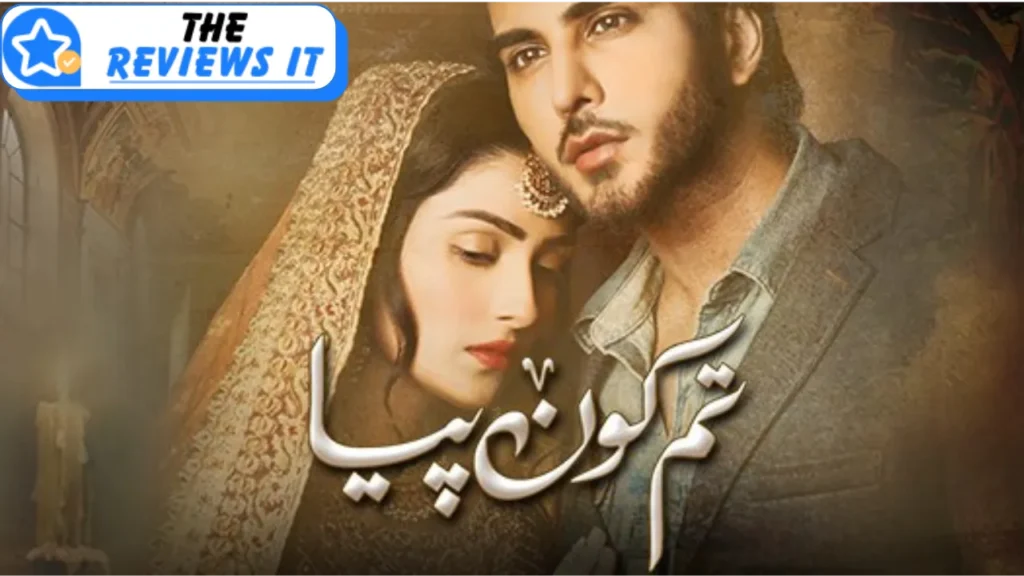Parchayee Drama Review: Exploring the rich tapestry of Pakistani television, “Parchayee” emerges as a captivating drama series that has garnered significant attention.
Delving into the heart of “Parchayee”:
This section offers an in-depth exploration of the acclaimed Pakistani drama “Parchayee.”
Unveiling the narrative:
Here, we take a closer look at the storyline, characters, and the compelling conflicts that drive the series forward.
Hum TV: Leading the charge in Pakistani entertainment:
This segment delves into the influential role of Hum TV, a prominent channel renowned for showcasing high-quality Pakistani dramas, including the widely acclaimed “Parchayee.”

Concept and Theme
Though “Parchayee” is not structured as an anthology drama, it weaves in some themes commonly found in such formats.
Understanding the Anthology Format:
An anthology series typically features a collection of stand-alone stories, each with a unique cast and setting, unified by a common genre, theme, or title. Examples of popular anthology series include “Black Mirror.”
The Role of Short Stories in Urdu Literature:
Short stories hold a prominent place in Urdu literature, with roots tracing back to the Mughal era. These narratives offer a powerful medium for addressing intricate themes and social issues concisely. Renowned writers like Saadat Hasan Manto and Ismat Chughtai have made significant contributions with their impactful short stories.
Key Themes in “Parchayee”:
While “Parchayee” isn’t an anthology, it explores themes that are central to many Pakistani dramas:
- Love and Relationships: The series delves into the intricate dynamics of love, familial bonds, and the challenges that arise within relationships.
- Human Emotions: “Parchayee” focuses on a range of human emotions such as jealousy, envy, forgiveness, and acceptance.
A Mirror to Pakistani Society and Culture:
Pakistani dramas often reflect the nation’s social fabric and cultural norms. “Parchayee” likely examines relevant societal themes, including family structures, societal expectations, and the roles of women, offering viewers a glimpse into contemporary Pakistani life.
Cast and Performances
Key Cast Members:
- Sabreen Hisbani: Portrays Saba, a mother grappling with the challenges of remarriage and her evolving relationship with her daughter.
Minal Khan: Plays Pari, the daughter who finds it difficult to accept her mother’s new husband.
Hammad Farooqui: Stars as Saad, Pari’s stepfather, striving to connect with her.
Main Cast Overview:
These key characters form the core of the story in “Parchayee.” Additional characters may be introduced throughout the series, each playing important roles in various subplots.
Outstanding Performances and Memorable Roles:
Details about standout performances can often be found online. Reviews and articles may highlight specific moments or actors who have delivered particularly powerful portrayals.
Supporting Cast:
The supporting cast is essential in enriching the narrative and relationships within “Parchayee.” Characters such as Pari’s friends, Saba’s relatives, and others within their social circle significantly contribute to the storyline and emotional depth.
Impact of Supporting Actors:
Supporting actors enhance the narrative by adding complexity, humor, and providing support to the main characters. Their performances help create a believable world and amplify the emotional resonance of the story.
- Sabreen Hisbani as Saba
- Minal Khan as Parishay “Pari”
- Ahsan Mohsin Ikram as Haaris.
- Hammad Farooqui as Saad
- Asif Raza Mir as Khawar
- Qavi Khan as Saad and Parizay’s Grandfather
- Fazila Kaiser as Rehana
- Hira Hussain as Shiza (dead)
- Arisha Razi as Sania
Storytelling and Writing
Narrative Style:
We’ll examine whether “Parchayee” follows a linear narrative, maintaining a straightforward timeline, or if it incorporates flashbacks or flash-forwards to enrich the backstory or hint at future events.
Perspective Analysis: Does the narrative stick to a single character’s viewpoint, or does it shift between multiple characters, providing a more comprehensive understanding of the events?
Dialogue and Character Development:
Investigate how dialogue is utilized to reveal the characters’ motivations, personalities, and relationships. Does the dialogue sound authentic and believable?
Evaluate how characters grow and change over the course of the series. Do they face challenges and learn from their experiences?
Themes Explored Through Storytelling:
Examine how the themes of love, relationships, and human emotions are integrated into the narrative. How do the characters’ journeys reflect these themes?
Consider how the series addresses social issues pertinent to Pakistani society. Does it offer a critique or simply portray the everyday realities of life in Pakistan?
Writing Style and Techniques:
Analyze the writer’s use of descriptive language, imagery, and symbolism. How does the writing shape the overall tone and mood of the drama?
Look at the story’s pacing. Does it progress steadily, or are there moments of intentional slowdowns or intense climaxes?
External Resources:
Reviews and critiques of “Parchayee” can provide additional insights into the effectiveness of its storytelling and writing methods.
By exploring these elements, you can gain a richer understanding of the artistry behind “Parchayee” and how its story is brought to life.
Cultural and Social Impact of “Parchayee”
Representation of Pakistani Society
Family Dynamics:
“Parchayee” delves into the intricacies of family life, highlighting the interactions and relationships within a household. It explores the bonds between parents and children, and the nuances of blended families formed after remarriage. Does the series stick to traditional family roles and expectations, or does it present a modern take on these relationships?
Social Stratification:
The drama sheds light on the various social classes and economic conditions prevalent in Pakistani society. How are these differences depicted? Does “Parchayee” illustrate the contrast between different strata of society, and if so, how is this disparity addressed?
Cultural Practices:
“Parchayee” integrates numerous cultural traditions and societal norms, showcasing elements such as religious rituals, traditional attire, and social events. How authentically are these cultural aspects represented, and what role do they play in the narrative?
Cultural Significance
Promotion of Urdu Language:
Although “Parchayee” is not an anthology of short stories, it plays a significant role in promoting the Urdu language. Through its dialogues and storytelling, the series enhances the appreciation of Urdu and potentially delves into themes that resonate with literary traditions.
Social Messages
Family Acceptance:
Does “Parchayee” encourage a message of acceptance and understanding within the family unit, especially in the context of remarriage? How does it address the challenges and dynamics of integrating into a new family structure?
Importance of Communication:
The drama emphasizes the crucial role of communication in resolving conflicts and fostering healthy relationships. How effectively does it convey this message through its characters and plotlines?
Gender Roles:
How does “Parchayee” portray gender roles within Pakistani culture? Does it challenge traditional stereotypes or does it reinforce existing societal expectations? The series’ approach to gender roles can offer insights into its stance on contemporary social issues.
Impact on Viewers
Viewer Resonance:
Consider the potential impact of “Parchayee” on its audience. How might it spark discussions on social issues and challenge existing norms? To understand its social impact, one can look into online reviews and audience feedback, which can provide a gauge of how the drama was received and the conversations it inspired.
Conclusion: Parchayee Drama Review
Final Thoughts
Reflecting on “Parchayee,” several key insights emerge:
Exploration of Themes:
“Parchayee” skillfully navigates its thematic landscape, offering a profound exploration of family dynamics, societal norms, and personal growth. The drama’s narrative depth invites viewers to contemplate complex issues with empathy and introspection.
Effectiveness of Performances and Storytelling:
The performances in “Parchayee” are compelling, breathing life into characters who grapple with love, loss, and identity. The storytelling is poignant and effective, weaving together intricate plotlines that resonate emotionally.
Nuanced Portrayal of Pakistani Society:
The drama presents a nuanced portrayal of Pakistani society, capturing its diversity and richness. It challenges stereotypes while celebrating cultural traditions, making it a noteworthy addition to the portrayal of contemporary Pakistani life in media.
Recommendation for Viewers
Consider watching “Parchayee” if you enjoy:
- Engaging family dramas that delve into interpersonal relationships.
- Explorations of Pakistani culture and societal dynamics.
- Stories that explore themes of love, resilience, and personal transformation.
Future Prospects
While “Parchayee” may not have future seasons planned:
- The success of the drama could pave the way for future projects by its talented creators, potentially exploring similar themes with fresh narratives.
- Hum TV, known for its diverse range of dramas, continues to produce compelling content. Exploring their catalogue can offer more insights into Pakistani storytelling and culture.
Keep an eye out for updates or announcements regarding new projects from the team behind “Parchayee” or Hum TV, as they continue to shape the landscape of Pakistani television.









